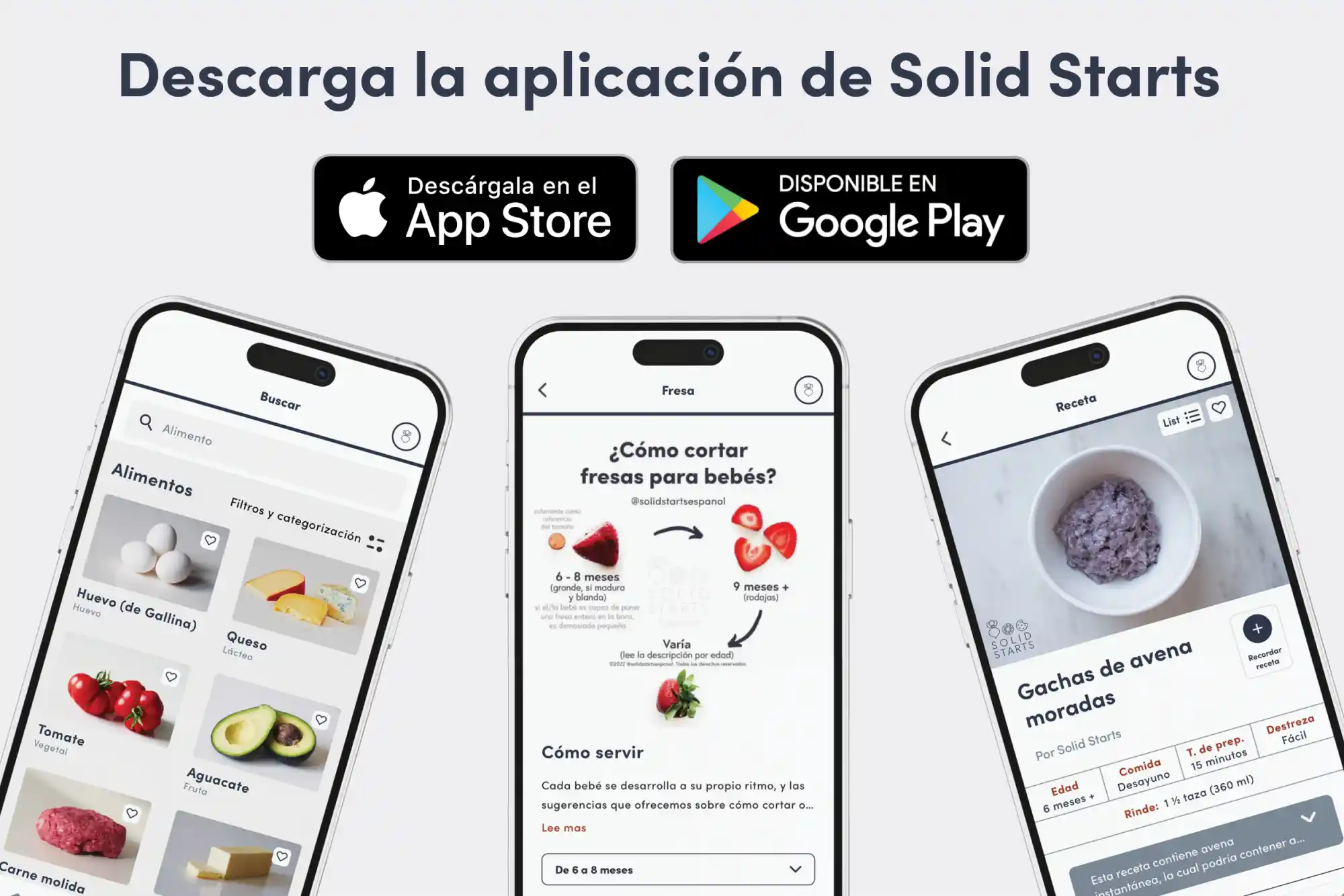Acceda a la base de datos First Foods® en Solid Starts App.
Leer másCornmeal (Polenta)
Grano
Sugerencia de edades
6 meses
Alto contenido de hierro
No
Alérgeno común
No

When can babies have cornmeal?
Cornmeal may be introduced as soon as a baby is ready to start solids, which is generally around 6 months of age.
Corn that is dried and finely ground up has many names: grits, masa harina, and polenta, to name just a few. The preservation technique has roots in Central and South America, where people living in the region learned to cultivate the grain long before the arrival of Europeans, who introduced the food around the world. Cornmeal comes in different colors (blue, red, white, and yellow) and texture ranges from coarse to fine.
How do you serve cornmeal to babies?
Cada bebé se desarrolla a su propio ritmo, y las sugerencias que ofrecemos sobre cómo cortar o preparar determinados alimentos son generalizaciones para una amplia audiencia.
6 months old +:
Use cornmeal to make grits, soft polenta, porridge, or thick stews that baby can scoop with hands or a spoon. You can also use cornmeal to make pancakes, breads, or muffins. Just know that bread, when moistened by saliva, can stick to the tongue and to the roof of the mouth and cause gagging. Firm polenta can also be cut into thin slices or sticks for baby to grab and munch on. To minimize choking risk, make sure the polenta is thinly sliced and, if pan frying, do not let the slices get too firm or crispy. Polenta cakes and sticks should be soft enough that they mash with gentle pressure.
9 months old +:
Serve cornmeal in scoopable forms as desired, including grits, soft polenta, porridge, or thick stews. Offer the food on a pre-loaded spoon, or let baby scoop with their hands. When you see signs of a developing pincer grasp (where the thumb and pointer finger meet), move down in size by offering bite-sized pieces of cornbread or muffins or pancakes made with cornmeal for baby to practice picking up. Thin, lightly pan-fried polenta cakes and sticks can also be torn into bite-sized pieces at this age. Just make sure the slices do not get too firm or crispy. Pieces of polenta should be soft enough that they mash with gentle pressure. Alternatively, try lightly coating slippery fruits like avocado, fresh apricot halves, mango spears in cornmeal to add grip.
12 months old +:
Continue serving cornmeal as grits, polenta, porridge, breads, and pancakes, as well as curries, soups, and stews. Cornmeal grains help thicken a stew’s texture, which can make it easier for toddlers to practice eating stews with a spoon. If the child is not interested in using utensils, keep in mind that using utensils can be exhausting for new eaters, and many children toggle back and forth between feeding themselves with their fingers and utensils. Try not to apply too much pressure—consistent and accurate utensil use will come in due time—probably sometime after the second birthday.
Videos
Is cornmeal a choking hazard for babies?
No. Cornmeal presents a low risk when safely prepared for a child’s age and developmental ability, though, in theory, an individual could choke on any food. That said, firm or crispy preparations of cornmeal could pose an increased risk of choking. To reduce the risk, prepare and serve cornmeal in an age-appropriate way as described in the How to Serve section. As always, make sure you create a safe eating environment and stay within an arm’s reach of baby during meals.
Learn the signs of choking and gagging and more about choking first aid in our free guides, Infant Rescue and Toddler Rescue.
Is cornmeal a common allergen?
No, cornmeal is made from corn, and corn allergies are uncommon, but have been reported, with symptoms ranging from short-lived oral allergy symptoms to anaphylaxis. Some individuals with allergy to lipid transfer proteins or chitinase may also have a corn allergy. Corn is known to cross-react with other cereal grains, especially rice, wheat, and barley. However, most individuals with corn allergy can safely consume other cereal grains, and vice versa.
As you would when introducing any new food, start by offering a small quantity of cornmeal for the first few servings. If there is no adverse reaction, gradually increase the quantity over future meals.
Is cornmeal healthy for babies?
Yes. Cornmeal is rich in carbohydrates to provide quick energy, with a dash of fiber to help baby’s gut microbiome flourish and balance blood sugar levels. It also contains lots of folate and offers some B vitamins like vitamin B6 and niacin—important nutrients that babies need for healthy growth and development.
Is cornmeal gluten free?
Yes. Cornmeal is gluten free, and it is safe for individuals with wheat allergy, celiac disease, or non-celiac gluten sensitivity. However, some prepared foods and products (such as cornbread and corn cakes) are often made from a blend of cornmeal and gluten-containing flours, so make sure to read the ingredients label.
¿Es necesario tener una trona/silla alta?
Si bien una silla alta puede ayudar a crear un entorno seguro para comer, existen formas alternativas para que el/la bebé coma de forma segura, así como sostenerlo/a en tu regazo o sentarse juntos en el suelo. Para obtener más información, consulta nuestra Guía detallada de sillas altas para bebés.
¿Qué utensilios necesito para empezar?
¡Ninguno! Sirve los alimentos sólidos directamente en la bandeja, plato o tazón del/a bebé y luego deja que el/la bebé explore con las manos. Si lo deseas, tenga una cuchara o un tenedor disponibles para ayudarlo/a a familiarizarse con los utensilios, pero no se espera que adquiera las habilidades para usarlos hasta que sea un poco mayor.
Nuestro equipo
Escrito por
Consejos de expertos directo a tu bandeja de entrada
¡Suscríbete y recibe correos semanales con recetas, consejos y más!
Copyright © 2025 • Solid Starts Inc





